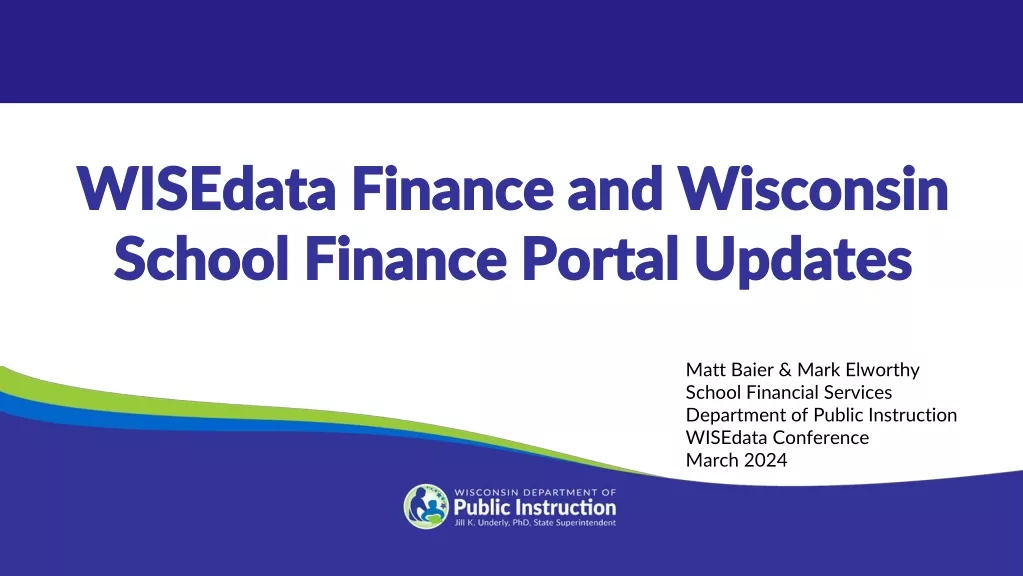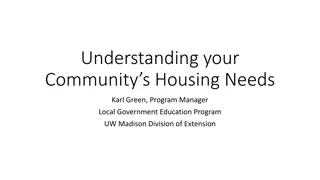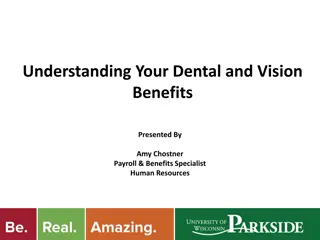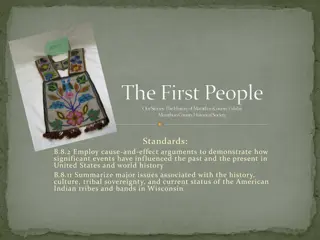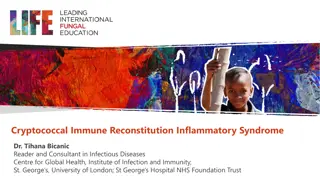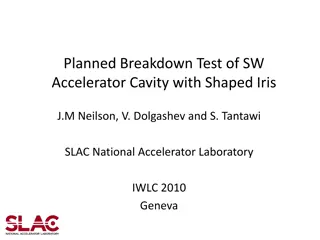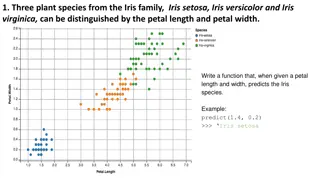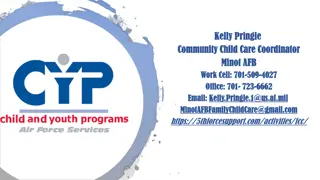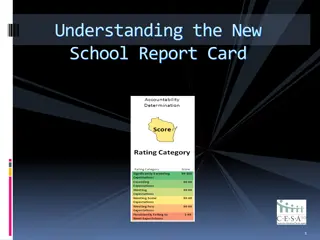A Comparison of IRIS and Family Care Programs in Wisconsin
IRIS (Include, Respect, I-Self-Direct) and Family Care are two long-term care programs in Wisconsin providing services to elders and individuals with disabilities. IRIS, initiated in 2008, offers self-directed care options, while Family Care, authorized in 1998, aims to enhance consumer independence and quality of life. Both programs serve Medicaid-eligible individuals but differ in service delivery and management approaches.
Download Presentation

Please find below an Image/Link to download the presentation.
The content on the website is provided AS IS for your information and personal use only. It may not be sold, licensed, or shared on other websites without obtaining consent from the author.If you encounter any issues during the download, it is possible that the publisher has removed the file from their server.
You are allowed to download the files provided on this website for personal or commercial use, subject to the condition that they are used lawfully. All files are the property of their respective owners.
The content on the website is provided AS IS for your information and personal use only. It may not be sold, licensed, or shared on other websites without obtaining consent from the author.
E N D
Presentation Transcript
UNDERSTANDING SELF-DIRECTED CARE IN WISCONSIN: A COMPARISON OF IRIS AND FAMILY CARE PROGRAMS Grant Cummings, Patric Hernandez, Jerrett Jones, Andrew Kell, and Jacob Schindler
Background IRIS-Include, Respect, I-Self-Direct Long term care program administered by the Wisconsin Department of Health Services and initiated in July 2008 Long-term care services are provided to Wisconsin elders, and adults with physical and developmental disabilities An alternative to Wisconsin s managed care program Family Care, and allows clients at a nursing home level of care to select and manage the long-term care services they receive
Background IRIS-Include, Respect, I-Self-Direct The federal Centers for Medicare and Medicaid services require that recipients be provided with multiple services options, including a managed care system and self-directed system The Adult Long-Term Care Functional Screen-Version 3, is used to determine long term eligibility determined the ability to perform the daily activities of living
Background Medicaid is a jointly funded federal-state insurance program for low-income and needy people State long-term care programs are for Medicaid-eligible individuals who meet the level of care standards for nursing home admission Those who do not meet nursing home level of care may be provided Medicaid long-term care card services (medical-related care) and some level of interdisciplinary care management, but are not allowed waivers for individual care
Family Care In January 1998, Family Care was authorized by the Governor and the Wisconsin state legislature to provide a cost-effective approach that would facilitate consumer independence and enhance quality of life It serves people with physical and developmental disabilities, and frail elders with the following specific goals: giving people better choices about where they live and what kinds of services and supports they get to meet their needs; improving access to services; improving quality through a focus on health and social outcomes; and creating a cost-effective system Family Care is available in fifty-three out of the seventy-two counties in Wisconsin
Family Care (Continued) To facilitate Wisconsin s long-term goals, Family Care has two major organizational components: Aging and Disability Resource Centers (ADRC) and Managed Care Organizations (MCO) ADRCs are designed to be a first point of contact where older individuals and people with physical or developmental disabilities can locate information and advice about a broad range of services available to them MCOs, through a comprehensive network of long-term care services and contracts with providers, deliver services tailored to an individual s specific needs.
Wisconsin Self-Directed Care: IRIS In 2008, the Wisconsin Department of Health Services in conjunction with PricewaterhouseCoopers modified the Family Care budget methodology for a new program, IRIS In IRIS, individuals self-manage their publicly funded long-term care supports, goods, and services The new program allows individuals to choose and allocate services they use IRIS emphasizes the self-direction given to individual budget allocations that are commensurate with participant abilities and support needs
Wisconsin Self-Directed Care: IRIS IRIS is organized through the use of regional Aging and Disability Resource Centers (ADRC) and two statewide contract organizations: the Independent Counseling Agency (ICA) and the Financial Services Agency (FSA) The ADRC provides enrollment and benefits counseling that are consistent with Family Care The Independent Counseling Agency (ICA) provides counseling for IRIS participants The Financial Services Agency (FSA) tracks all spending and provides payroll and payout services for participants
Policy Questions Because Wisconsin IRIS program is unique among Self-Directed Care programs in providing services to individuals with physical or developmental disabilities and the elderly there is an urgent need to understand: How do IRIS participants differ from Wisconsin Family Care participants? Do these differences including demographics, service expenditures, and budget amounts warrant any changes to Self-Directed Care in Wisconsin?
Comparing IRIS & Family Care Participants Last Functional Screen for participants in 2009 (as of October 31st) IRIS: 1,002 participants Family Care (FC): 30,773 participants
IRIS & Family Care Age Groups 100% Average IRIS Participant: 49.6 years old 85+ years 6% 17% 90% 21% 80% 65-84 years Average FC Participant: 62.6 years old 70% 34% 22% 60% 50-64 years 50% 40% 20% 32% 25-49 years 30% 20% 22% 18-24 years 10% 19% 7% 0% IRIS Family Care
IRIS & Family Care Gender 100% 90% 80% FC may have a slightly higher proportion of female participants because of a large senior population 53% 70% 61% 60% Female Male 50% 40% 30% 47% 20% 39% 10% 0% IRIS Family Care
IRIS & Family Care Race IRIS Family Care Wisconsin* Both programs are similar to each other and Wisconsin general population Caucasian Black Both programs have slightly higher proportions of Black self-identified population proportions than Wisconsin, but slightly lower Caucasian and Hispanic population proportions Hispanic Asian American Indian 0% 20% 40% 60% 80%
IRIS & Family Care Employment Status 100% The majority of IRIS participants are not employed, yet not old enough to be retired 14% 90% 80% 40% 70% Retired Not employed Part-time Full-time 60% 67% Difference between IRIS and Family Care may again be due to an older Family Care participant base 50% 38% 40% 30% 20% 16% 16% 10% 5% 3% IRIS 0% Family Care
IRIS & Family Care Target Groups 100% IRIS has a higher proportion of participants with developmental disabilities 90% 37% 80% 44% 70% Developmental Disabilities Physical Disabilities Frail Elderly 60% Family Care has a higher proportion of frail elders 50% 34% 40% 36% 30% 20% 29% 20% 10% 0% IRIS Family Care
IRIS & Family Care Participant Conditions Depression 1/3 of Family Care and 1/4 of IRIS participants are diagnosed with depression Mental Retardation Diabetes Other Dementia Cancer Alzheimer's ~30% of participants from both programs are diagnosed with mental retardation Cerebral Palsy Schizophrenia Bi-Polar Disorder Autism Blind Deaf Multiple Sclerosis Terminal Illness Muscular Dystrophy Spinal Bifida Ventilator Dependent 0% 5% 10% 15% 20% 25% 30% 35% 40% IRIS Family Care
IRIS and Family Care Depression Rates by Target Group Family Care participants are diagnosed with depression at higher rates than IRIS for each target group Physical Disabilities Frail Elderly The physical disabilities target group has the highest proportion of participants diagnosed with depression Developmental Disabilities Total 0% 10% 20% 30% 40% 50% IRIS Family Care
IRIS and Family Care Participants with Special Equipment Slight differences between IRIS and Family Care may be due to an older Family Care population and target group proportions Walker or Cane Wheel Chair or Scooter Mechanical Lift Catheter 0% 10% 20% 30% 40% 50% IRIS Family Care
IRIS and Family Care Participant Characteristics Overnight Care Needs Help Bathing Needs Help With Meds Mental Health Evaluation of participant needs allows DHS to allocate funding Short-Term Memory Loss Unable To Remember Needs Help Dressing Needs Help Toileting Over half of participants in both programs need overnight care and help with bathing Needs Help With Decisions Needs Some Help Toileting Offensive Behavior Exercise Eating IRIS has higher proportions of participants for 2/3 of these needs categories Long-Term Memory Loss Physically Resistive Current Substance Abuse Brain Injury Wander 0% 10% 20% 30% 40% 50% 60% 70% 80% IRIS Family Care
IRIS and Family Care Living Situation Comparison Alone The majority of participants in either program are living in one of the following 3 living situations: alone with a spouse/partner with family With Spouse/Partner Community-Based Residential Facility Family Nursing Home Licensed Adult Family Home Hospice Care Paid Caregivers Home Residential Care / Aptartment Complex With Non-relatives/Roommates Home/Apartment (Support Service Independent Apartment - Community- With One Non-Relative With Live-In Paid Caregivers Indicates living situation is not allowed once enrolled in IRIS Other (Includes Jail) Other Situations (<1% of pop. each) 0% 5% 10%15%20%25%30%35%40%45% IRIS Family Care
IRIS and Family Care Living Situations with Spouse, Partner, or Family 100% 2/3 of IRIS participants are living with spouse/partner/family 90% 34% 80% 70% 69% 60% ~1/3 of Family Care participants are living with spouse/partner/family 50% 40% 66% 30% 20% 31% 10% 0% IRIS Family Care Without Spouse, Partner, or Family With Spouse, Partner, or Family
IRIS Participantsin Assisted Living Situations* Assisted - 4% IRIS: 96% of participants living in non- assisted living situation Non- Assisted Living Situation - 96% Assisted - 24% Non- Assisted Living Situation - 76% Family Care: 76% of participants living in non-assisted living situation *Some participant living situations were recorded before enrollment in program
IRIS & Family Care Participants Living in Preferred Situation 100% A higher proportion of IRIS participants are living in their self-identified preferred living situation than Family Care 14% 90% 24% 80% 70% 60% 50% 86% 40% 76% 30% 20% 10% 0% IRIS Family Care Respondents Living In Situation Other Than Preferred Respondents Living In Preferred Situation
Spending Patterns in IRIS vs. Family Care Because the scope of services differs between Family Care and IRIS, we compare total Medicaid spending per person The median expenditures by target group reveal higher spending in DD group, lower in FE and PD groups in IRIS, compared to Family Care The overall median monthly expenditure is $156 higher in IRIS than in the Family Care program
IRIS vs. Family Care Monthly Expenditures Difference Between IRIS and Family Care Expenditures $437 Family Care Median Monthly Expenditure $3,030 Percentage of IRIS Participants 45% Percentage of Family Care Participants 36% IRIS Median Monthly Expenditure $3,467 Target Group Developmental Disability Physical Disability Frail Elderly Total -$138 33% 29% $1,959 $2,097 -$128 $156 22% 100% 35% 100% $2,067 $2,503 $2,195 $2,347 Note: Includes Medicaid Fee-for-Service expenditures in addition to within-program expenditures. Figures are not adjusted to account for participant acuity characteristics that differ between programs.
Service Use in the IRIS Program For each target group, supportive home care supervision was the most common service Nonmedical transportation was also a common service across target groups Supported employment and daily living skills were commonly used only by participants in the developmental disability target group
Service Use in IRIS by Developmental Disability Target Group Number of IRIS Participants Median Monthly Expenditure Service Category Shc*-Supervision Services Hours 188 $1,400.00 Other Allowable CMO* Services 181 $340.17 Respite Care Other Specialized Transportation And Escort Nonmedical 137 $520.00 134 $161.04 Day Center Services Treatment Counseling And Therapeutic Resources Alternative 71 $785.28 50 $265.00 Prevocational Services 40 $684.43 Shc-Supervision Services Days 32 $2,634.00 Supported Employment 28 $682.50 Daily Living Skills Training 27 $757.39
Service Use in IRIS by Physical Disability Target Group Number of IRIS Participants Median Monthly Expenditure Service Category Shc - Supervision Services Hours 144 $797.58 Other Allowable CMO Services 83 $120.00 Specialized Transportation And Escort Nonmedical 53 $78.75 Shc - Chore Services Hours 35 $270.00 Personal Emergency Response Systems 24 $31.00 Adaptive Aids Other 23 $1,002.20 Communication Aids 17 $108.00 Shc - Supervision Services Days 17 $550.00 Shc -Routine Home Care Services 17 $237.90 Counseling And Therapeutic Resources Alternative 14 $218.60
Service Use in IRIS by Frail Elderly Target Group Number of IRIS Participants Median Monthly Expenditure Service Category Shc - Supervision Services Hours 94 $762.00 Shc -Routine Home Care Services 32 $234.00 Other Allowable CMO Services 28 $149.46 Specialized Transportation And Escort Nonmedical 26 $102.36 Shc - Chore Services Hours 16 $742.00 Personal Emergency Response Systems 11 $32.00 Shc - Supervision Services Days 10 $366.18 Respite Care Other 9 $350.00 Communication Aids 4 $99.69 Home Modifications 4 $2,260.00
IRIS Budgets IRIS participants have budgets based on their acuity The allocation is a prediction of spending and acts as a guideline for budget setting at the ICA Budgets, on average, are lower than allocations There is some flexibility for special purchases, but in general under-spending does not lead to a balance being carried forward
IRIS Budgets and Allocations Average Monthly Allocation* Median Range Standard Deviation Total Monthly Allocations Average Monthly ICA Budget Median Range Standard Deviation Total Monthly ICA Budgets Average Difference Between Allocation and Budget Median Range Standard Deviation Total Difference Between Allocations and Budgets $3,314 $1,906 $0 to $13,062 $3,169 $2,183,746 $2,780 $1,643 $11 to $12,718 $2,679 $1,832,035 $534 $47 -$6,284 to $9,613 $1,337 $351,711
Percentage of IRIS Participants by Budget Amounts 35% 30% Percentage of Participants 25% 20% 15% 10% 5% 0% Monthly Budget Amount
Participants by Difference Between Allocation and Budget 70% 60% Percentage of Participants 50% 40% 30% 20% 10% 0% Difference Between Allocation and Budget
Participants by Difference Between Allocation and Budget Expressed as Percent of Budget 30% 25% 20% Percent of Participants 15% 10% 5% 0% Difference Between Allocation and Budget Expressed as a Percent of Budget
IRIS Program-Specific Characteristics Number of Participants Percentage of Participants Average Monthly Expenditure* Standard Deviation Target Group Min Max Developmental 346 45% $3,025 $2,515 $38 $14,211 Disability Physical 252 33% $1,007 $992 $42 $10,126 Disability Frail Elderly 164 22% $737 $595 $27 $5,131 Total 762 100% $1,865 *Spending does not include Medicaid Fee-for-Service expenditures. There may be lags in spending data that influenced this analysis.
Predicting Spending DHS uses statistical models to set the budget allocations for IRIS and Family Care participants For the first couple years of IRIS existence, DHS has used Family Care data to create IRIS statistical model Why? IRIS was a brand new program and did not have any data IRIS participants were entering and exiting the program To assure cost neutrality between Family Care and IRIS Participants receive the same budget allocation regardless of which program they enroll in Spending during this adjustment period would not reflect the spending of participants when the program is stabilized
Predicting Spending (Cont.) By 2009, IRIS participants and staff were accustomed to the program, so is it still appropriate to use Family Care data to create the spending model? To answer this question, we created our own statistical model and applied it to both the IRIS and Family Care data Like DHS, we used participants responses from the functional screen to predict actual program spending
Predicting Spending Results We found that the important predictors of spending were different in the two programs. Example: Needing help preparing meals is an important predictor of spending in Family Care, but not in IRIS, while not having any means for effective communication is important in IRIS, but not in Family Care. This suggests that different spending models need to be created: one from IRIS data and one from Family Care data.
Predicting IRIS Participation We also wondered if we could predict which long- term care participants will enroll in IRIS This information could help DHS predict future budget needs, especially as IRIS expands to new counties To explore this issue, we created another statistical model from responses to the functional screen We found that some screen responses predicted a lower likelihood of enrolling in IRIS while others predicted a higher likelihood of enrolling
Predicting IRIS Participation Results General patterns in our results People needing relatively simple assistance in activities of daily living were more likely to enroll in IRIS Each year of age predicts a lower likelihood of enrolling in IRIS Individuals that have difficulty communicating or making decisions are less likely to enroll in IRIS We also tested whether this model could be used to forecast future enrollment in IRIS We found it did not accurately predict the enrollment of current IRIS participants This suggests that DHS should not rely on functional screen responses to predict future enrollment in IRIS
Recommendations Policy Recommendation 1: Future statistical models used to predict the spending of IRIS participants should be created from IRIS Cost data IRIS has stabilized as a program IRIS participants and their spending patterns are significantly different than those of Family Care participants The challenge for DHS is to find a different method for achieving cost neutrality between IRIS and Family Care
Recommendations (Cont.) Policy Recommendation 2: Wisconsin DHS should track IRIS participation by target group and required services to follow any emerging trends in enrollment We have highlighted some patterns in IRIS enrollment, but these will continue to change as the program matures The functional screen is insufficient for this purpose DHS should continue efforts to administer surveys, site visits, and interviews with IRIS participants and ADRC staff to gain more insight into why participants enroll in IRIS
Recommendations (Cont.) Policy Recommendation 3: Wisconsin DHS should do what it can to streamline the IRIS data systems IRIS information is spread over multiple data systems This makes it difficult to evaluate program data on a frequent and systematic basis DHS should attempt to consolidate these systems DHS should also establish a data protocol so that data generation and analysis can be replicated quickly and frequently
Recommendations (Cont.) Policy Recommendation 4: Wisconsin DHS should initiate efforts to systematically track the outcomes of the IRIS program Participant self-assessment surveys and program assessments should be added to the functional screen DHS should request regular reports from the ADRCs, ICA, and FSA regarding participant complaints and customer service calls Tracking program outcomes will ensure that IRIS continues to meet the needs of participants
Questions? We now have some time for questions.



